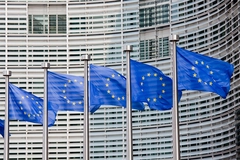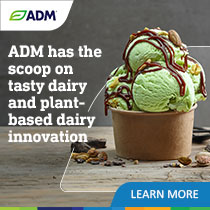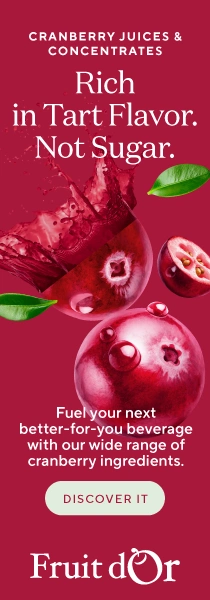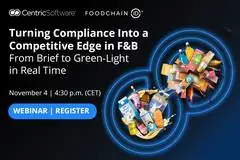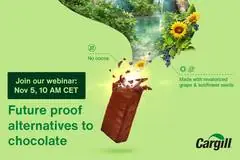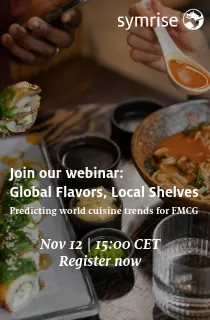Nestlé Technology Innovator: “We Want to be the FMCG Leader in Leveraging Digital & Social Media”
15 Apr 2016 --- E-commerce and the digital food revolution is providing a major growth platform for Nestlé, as it looks to meet its’ goal of being the leading FMCG company to leverage digital & social media for consumer engagement, nutrition and brand building. Strong innovation in direct digital marketing to consumers through brands such as KitKat is in effect, however the role for wearable technology is also being exploited in the company’s R&D model, in the creation of personalized nutrition products to meet the demands of a growing aging population.
Speaking at the 2016 VMT Food Event in s’Hertogenbosch, the Netherlands, which this year was focused on the so-called “digital food revolution,” Layth Bouchuiguir, Technology Innovation for Business Development & Consumer Interaction at the world’s biggest food company noted how 5% of the company’s sales in 2015, worth a significant CHF 4 billion (US$4 billion) came from e-commerce. Recent innovations include Prodigio, the first connected Nespresso machine offering additional benefits thanks to its app.

In an interview with FoodingredientsFirst following his speech, Bouchuiguir confirmed that a large part of this 5% share of sales can be attributed to the Nespresso brand [with capsules first becoming available for online purchasing in 1998]. However there have been other innovative launches benefiting from digital marketing and use through other channels such as Amazon. “We launched our Cailler Swiss chocolate brand to be available through Amazon in the US and Canada. So it is another way to let consumers in other countries discover some of our more premium brands that are not available in their own markets,” he noted as a prime recent example.
 The online retail channel is an unexploited one for food. “We know that consumers are shopping online. But food has been a bit slow so far, with less than 1% of penetration the entire food industry including restaurants and groceries being attributed to internet purchases. But it is the biggest household spend – with the least penetration,” he noted.
The online retail channel is an unexploited one for food. “We know that consumers are shopping online. But food has been a bit slow so far, with less than 1% of penetration the entire food industry including restaurants and groceries being attributed to internet purchases. But it is the biggest household spend – with the least penetration,” he noted.
The digital revolution will cut the distance between the manufacturer and the consumer, by effectively leaving out the retailer as the middleman. This can provide opportunities to major companies with strong distribution networks, but bring its’ own logistics challenges too. “Just putting your product on the shelf has a cost when you have to negotiate with supermarkets. So you can remove that. But you can also move the logistics part, as you don’t need to go from the factory to the supermarket, to the consumer. You can go straight to the consumer. So you are cutting out a lot of operational costs there. From a business point of view, it makes a lot of sense, but from an operational point of view there are some complications, as food needs to be fresh. So we are also working on packaging technologies to see how we can food fresher for longer in its most natural state possible, without the use of chemicals or preservatives,” Bouchuiguir says.
He pointed to several highly interesting uses for the digital revolution within the chocolate space. “We had a pilot in Switzerland where we were sending fresh chocolate to consumers and we knew the route that the post would take. We would monitor the temperatures in that area and depending on the temperature on that day, the route that the delivery needs to take, we would either package the chocolates with a cooling technology or not. It’s important that chocolate arrives in mint condition and you need to do a lot of planning in order to do so, with it not being possible in certain summer months.”
The latest innovative project was a test on a chocolate launch in Switzerland with five different chocolates, which functioned as a profiling kit. “Consumers could eat these chocolates, go online and give their feedback. This feedback allowed us to create a sensory profile for our consumers. From this profile, we were able to customize a box of chocolates that we knew they would like.” This concept was also used to develop another gifting model, whereby you could send the five taster chocolates to someone through the mail. “They would give their feedback and then two days later, would get chocolates that were customized to their sensory profile. So there was almost a 100% likelihood that they would like every piece of chocolate in the box.” The use of this study, which gave the company some 15,000 sensory profiles, also provided the company with free consumer research on taste preferences, which would normally cost €30 per person.
A mapping technique that is based on a dogs physical characteristics has been used for the company’s US Purina brand, where a dog’s food can be customized on a very specific level, in terms of activity, weight, shine of coat etc. “So we can create a product for your pet specifically and we have an auto order mechanism in place. From a nutritional and scientific point of view, we can customize for the pet,” Bouchuiguir notes.

Nestlé uses digital technology to promote, market or deal with customer issues, but they can also benefit from it in product development: “co-creation.” Nestlé has reported early success for their Cailler Les Recettes de l’Atelier launch with the tagline: “Visibly authentic,” which was created in working with an online community. “On a recent project, we understood that consumers wanted things that were simpler, less ingredients, naturality and things like that. So we have an online community of chocolate lovers that we work with. When we were developing a product, we tried to understood what ‘artisanal,’ ‘hand crafted,’ and ‘natural’ mean to them. We finally came up with Cailler Les Recettes de l’Atelier, which is transparent and artisanal in look.”
Other creative marketing around the company’s brands included a move in 2013 to partner with Google on its Android mobile operating system by revealing it will be called “Android KitKat,” after Nestlé’s popular chocolate and wafer confectionery. It was the first time that a mainstream operating system has been given a licensed name. Android has been developed by the company’s engineers under sweet-themed names ever since the release of Android Cupcake in 2009 and continuing in alphabetical order until the most recent version, Android Jelly Bean. There's no exchange of money involved, but there was a significant promotional element, with both company’s expecting to benefit from the deal. In Japan, where KitKat is becoming a popular good luck charm to students sitting exams, special hologram marketing has been created, where good luck messages can be shared.
In his speech, Bouchuiguir noted the vast potential for packaging as a communication platform. “There is consumer interaction through gift sending, for example, but also quality control. You have smart and active packaging today, which can tell you if oxygen has been in the product. Soon we will have RFID on some packaging where traceability will be very easy, allowing calculation in the trolley without having to work it out at the cashier.”
Personalized nutrition is another interesting field of research that the company is looking at, as the decoding of genes becomes simpler and quicker. “We are understanding how each of us requires a slightly different diet and nutrients.” “Until today, nutrition has mainly been about macronutrients such as calories, sugar, fats etc. But micronutrients is where the real value is, in terms of vitamins and minerals and also the time of the day of consumption.” The company is currently using smart wristbands to extrapolate data, as an alternative to clinical trials.
Nestlé’s integration of the digital revolution into product development will also include new platforms in personalized nutrition. These topics which will be addressed in the next issue of the Innova – Food & Beverage Innovation newsletter.
By Robin Wyers

